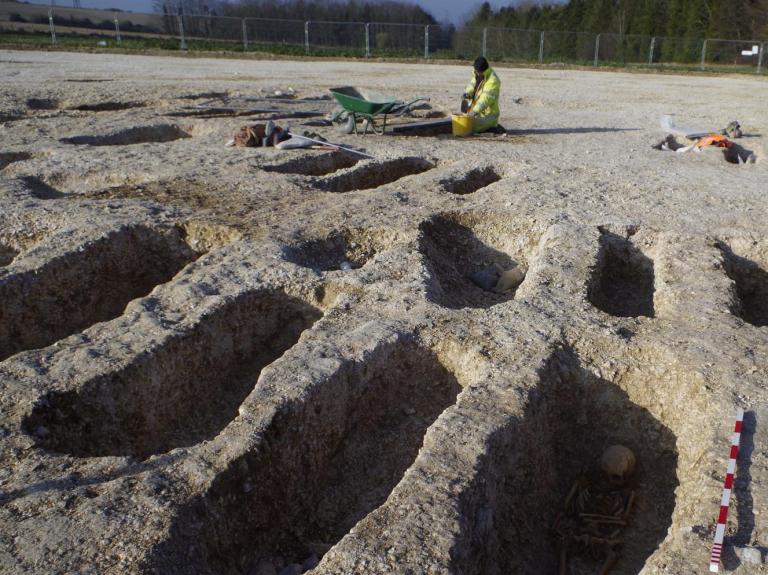The community that built the Neolithic causewayed enclosure at Larkhill which has been dated to between 3650 to 3750 BC, pre-dating Stonehenge by 600 years may have been the architects of the Stonehenge landscape that we see today.
The causewayed enclosure was uncovered in 2016 after Wessex Archaeology were commissioned by WYG on behalf of the Defence Infrastructure Organisation (DIO) to undertake excavations on land adjacent to Royal Artillery Larkhill in Wiltshire. The land, on the very edge of Salisbury Plain and, immediately north of the Stonehenge World Heritage Site, has been earmarked for the provision of service family accommodation under the Army Basing Programme.

Project manager Si Cleggett now believes that the community who built the causewayed enclosure may have been more closely involved in the planning of Stonehenge than previously thought.
Si Cleggett said:
“The causewayed enclosure at Larkhill was constructed during the late Stone Age, a period of transition when our ancestors gradually moved away from a mobile hunter-gatherer lifestyle and embraced a farming existence where the domestication of livestock and control of agriculture began.
"The communities who gathered at the Larkhill Causewayed Enclosure during the Early Neolithic were there 600 years before the landscape setting of Stonehenge was conceived and may have been involved in the conceptualisation or even the creation of the landscape we see today.
“It is enormously fitting that thousands of years later, those that strive to protect our identity as a nation will again meet at Larkhill through the delivery of service family housing.”
Causewayed enclosures are variously believed to be meeting places, centres of trade and cult or ritual centres to name but a few. They are the first earthen physical manifestations of the human need to enclose special spaces in the UK and, with only 70 known examples, are comparatively rare.
The Neolithic causewayed enclosure found at Larkhill was allowed to silt, was re-cut and then backfilled. During the early stages of the subsequent Beaker period a five-post alignment was driven through the now-filled ditch at the causewayed enclosure entrance on an orientation almost identical to what would later become the orientation of the stones of Stonehenge in relation to the rising and setting of the sun during solstices.
At 24 hectares, the Larkhill site is the largest open area archaeological excavation ever undertaken in proximity to the Stonehenge World Heritage Site.
The Larkhill site has also revealed a sequence of socio-cultural changes in burial and funerary belief systems when another transition took place − the end of the Stone Age and the beginning of the Beaker Period and the Bronze Age.

